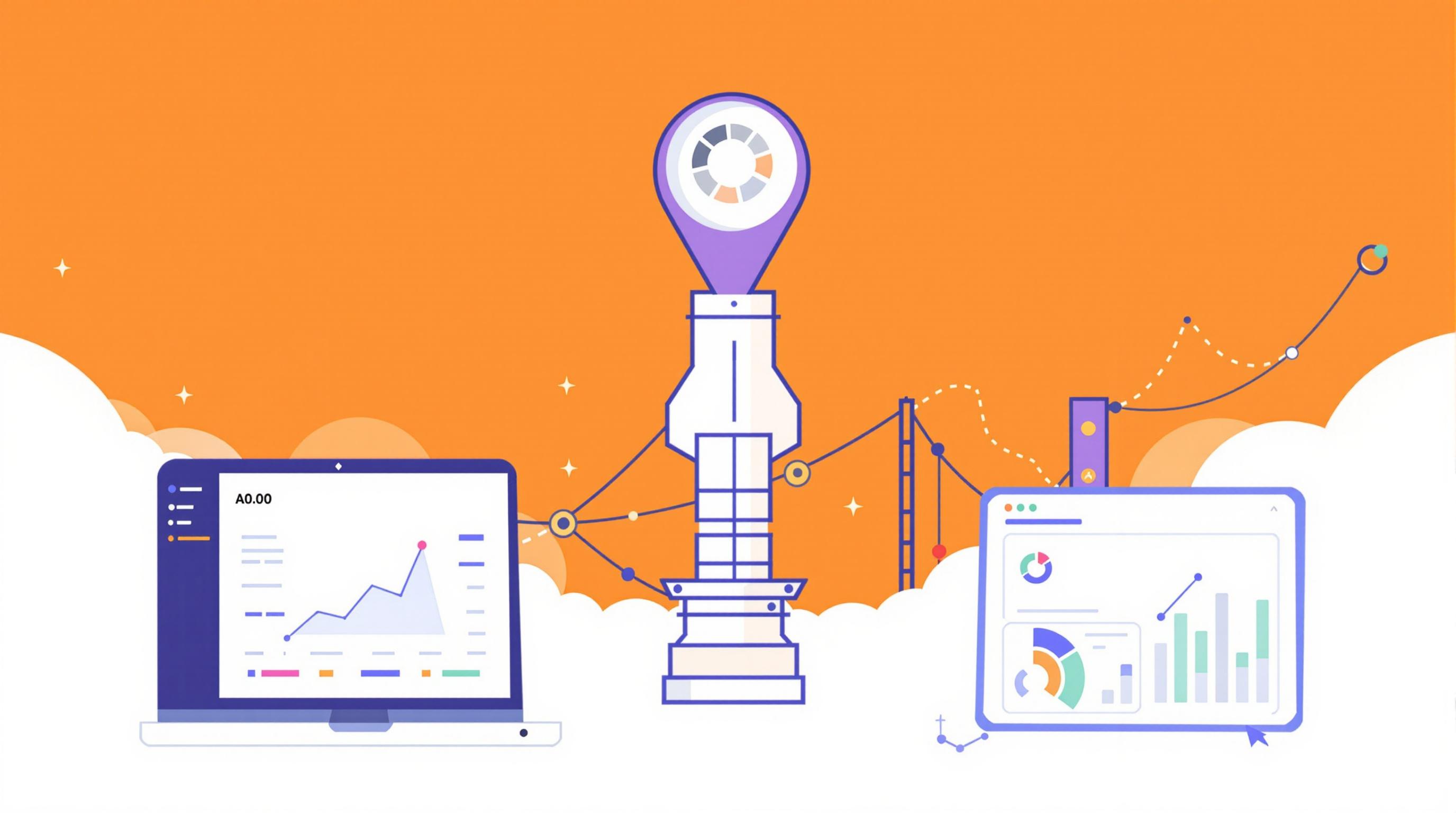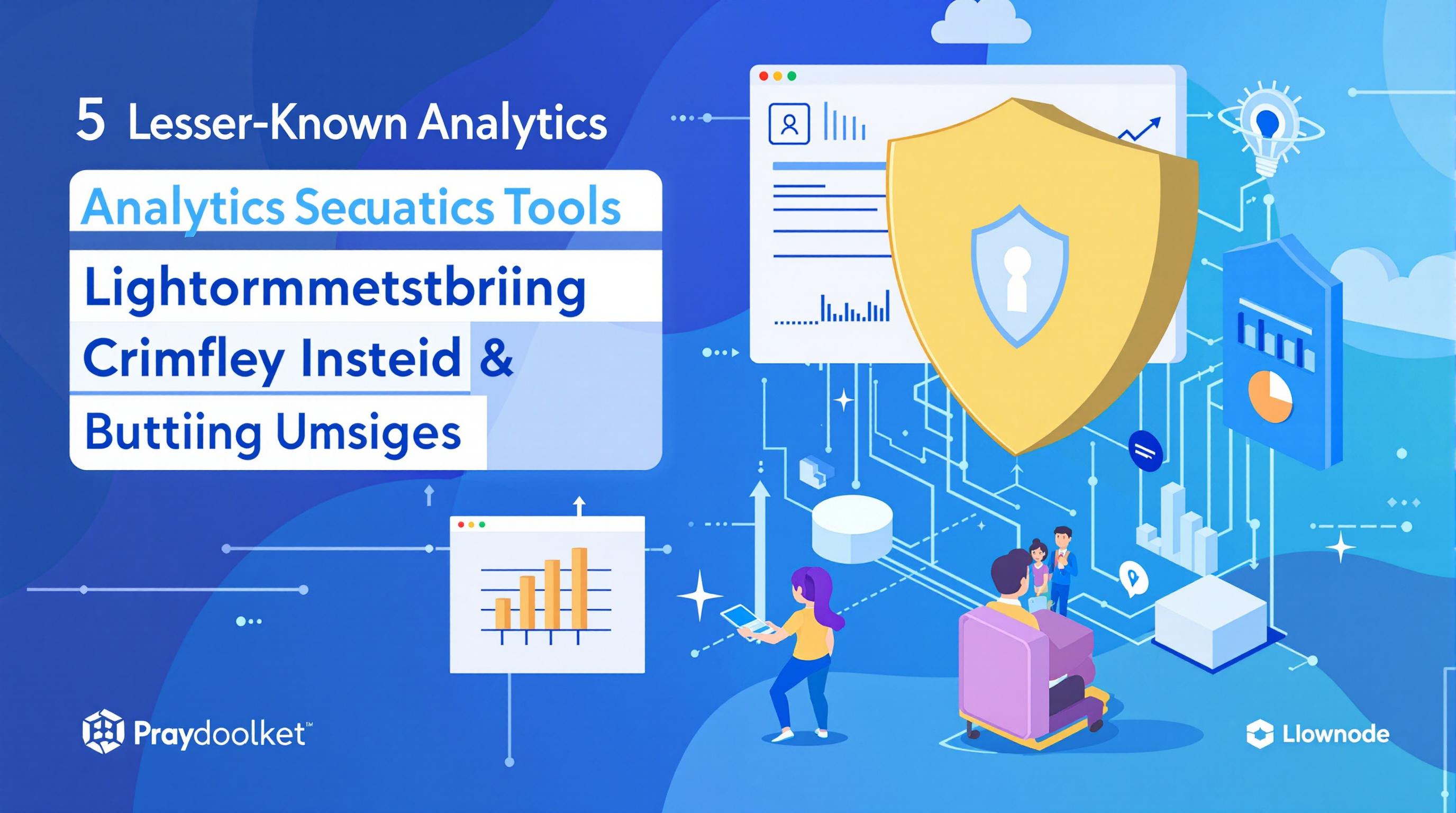Related Articles
- Top 6 Next-Gen B2B SaaS Engines Shaping Retention With AI-Powered Predictive Insights Since 2019
- Top 6 Emerging SaaS Onboarding Platforms of the Last Five Years That Actually Boost User Stickiness
- Top 8 Under-the-Radar Analytics Tools Launching Since 2019 That Outperform Big Names
- Top 7 Next-Gen Workflow Automation Platforms Revealed Comparing Game-Changing Features from the Last Five Years
- Top 6 Next-Gen Endpoint Security Solutions Since 2019 That Outsmart Modern Cyber Threats
- The Unseen Ripple Effect: How Obscure API Endpoints Influence Global Data Ecosystems in Unexpected Ways
9 Niche Analytics Tools Unlocking Untapped Consumer Behavior Patterns for Strategic Market Advantage
9 Niche Analytics Tools Unlocking Untapped Consumer Behavior Patterns for Strategic Market Advantage
9 Niche Analytics Tools Unlocking Untapped Consumer Behavior Patterns for Strategic Market Advantage
Introduction to Niche Analytics Tools
In today's data-driven market, understanding consumer behavior patterns is critical for businesses seeking a competitive edge. While mainstream analytics platforms offer broad insights, niche analytics tools delve deeper into specific consumer segments and behaviors that often remain hidden from the radar. These specialized tools provide granular data that can uncover untapped opportunities, enabling strategic decisions tailored to distinct market needs.
Such tools often incorporate advanced methodologies, including machine learning algorithms, sentiment analysis, and psychographic profiling. These techniques go beyond surface-level metrics like clicks and views, revealing nuanced consumer motivations and preferences. As a result, businesses can design more personalized campaigns and product offerings, ultimately fostering stronger customer engagement and loyalty.
Choosing the right niche analytics tool depends largely on the industry focus, data needs, and integration capabilities with existing systems. This article highlights nine cutting-edge tools that have demonstrated effectiveness in unlocking unique consumer behavior patterns, paving the way for innovative marketing strategies.
1. Crayon: Competitive Intelligence & Market Movement Analysis
Crayon specializes in real-time competitive intelligence, capturing market movements and consumer interactions across digital platforms. This tool monitors competitors' campaigns, pricing changes, and customer sentiment, providing businesses with a comprehensive view of market dynamics.
By tracking shifts in consumer attention and competitor strategies, Crayon helps firms anticipate trends and adapt their marketing efforts promptly. The platform’s dashboard offers detailed visualizations that facilitate quick decision-making based on live data streams.
Many businesses have leveraged Crayon to decode subtle shifts in consumer preferences that aren't immediately visible in traditional analytics, allowing for agile responses that improve market positioning (Crayon, 2023).
2. Clarabridge: Customer Experience & Sentiment Analysis
Clarabridge excels at extracting insights from customer feedback across multiple channels including social media, surveys, and call centers. Its advanced sentiment analysis capabilities detect emotional nuances that indicate customer satisfaction or dissatisfaction.
This tool goes beyond basic sentiment scoring by categorizing emotions and identifying key drivers behind customer opinions. Such granular understanding enables companies to address pain points effectively and enhance their overall customer experience.
For instance, brands using Clarabridge have discovered latent consumer frustrations previously unnoticed, informing targeted improvements that increased retention rates significantly (Clarabridge, 2022).
3. Segmentify: Personalization through Behavioral Segmentation
Segmentify focuses on real-time behavioral segmentation, allowing businesses to deliver personalized content and product recommendations. This platform collects user browsing and purchasing data to create dynamic customer profiles that evolve with changing preferences.
Its AI-driven engine surfaces hidden consumer patterns, such as week-specific buying behaviors or preference shifts linked to external factors. Such insights empower marketers to tailor campaigns with higher relevance and conversion potential.
Numerous e-commerce sites adopting Segmentify have reported increased engagement and sales uplift by leveraging its micro-segmentation capabilities to align offerings closely with customer intent (Segmentify, 2023).
4. EyeQuant: Visual Attention & UX Analytics
EyeQuant specializes in analyzing webpage design and user experience by quantifying where and how visitors’ visual attention is directed. By combining neural networks with cognitive models, EyeQuant predicts consumer focus points which impact engagement and conversion rates.
This tool enables marketers to optimize layouts and content placement based on empirical visual pattern data rather than guesswork. It highlights areas causing confusion or distraction, facilitating data-driven UX improvements.
EyeQuant’s insights have allowed brands to redesign websites to better match natural consumer viewing behaviors, resulting in improved interaction times and reduced bounce rates (EyeQuant, 2021).
5. Brandwatch Consumer Research: Deep Social Media Analytics
Brandwatch offers profound social media listening and analytics capabilities, tracking conversations, trends, and consumer sentiment across multiple social platforms. The tool’s niche focus lies in detecting emerging consumer topics and influencers relevant to specific industries.
Its powerful natural language processing algorithms identify subtle shifts in consumer language and preferences, helping brands stay ahead of cultural movements and competitor positioning.
Many marketers use Brandwatch to capture untapped discussions and sentiment shifts early, crafting proactive campaigns that resonate more deeply with target audiences (Brandwatch, 2023).
6. Mixpanel: Behavioral Analytics for Product Usage Patterns
Mixpanel provides detailed behavioral analytics focused on product interaction and user journeys. It tracks specific actions users take within digital products, highlighting the pathways that lead to retention or churn.
This granular focus helps companies identify friction points in the user experience and tailor product improvements based on actual use rather than assumptions. The tool’s funnel analysis and cohort tracking reveal evolving patterns over time.
Product teams frequently use Mixpanel to optimize onboarding flows and feature adoption by uncovering nuanced consumer behaviors that mainstream analytics might miss (Mixpanel, 2024).
7. Exploding Topics: Trend Identification and Forecasting
Exploding Topics discovers rapidly growing trends before they become mainstream by analyzing search engine traffic and consumer queries. This tool is particularly valuable for marketers wanting to capitalize on emergent interests early.
By identifying niche trends within specific sectors, businesses can innovate product lines or craft relevant marketing messages preemptively, gaining first-mover advantage.
Exploding Topics has enabled companies to pinpoint market opportunities months ahead, ensuring timely strategy shifts that capture untapped consumer enthusiasm (Exploding Topics, 2023).
8. Hotjar: User Behavior Heatmaps and Feedback
Hotjar combines user behavior heatmaps with direct feedback tools to provide a comprehensive view of how consumers interact with websites or apps. It visualizes clicks, scrolls, and mouse movements to reveal engagement hotspots and friction points.
Integrating qualitative and quantitative data, Hotjar enables marketers to understand the “why” behind user actions, enabling design and content strategies aligned with actual consumer intent.
Businesses have leveraged Hotjar to uncover subtle browsing behaviors that inform layout changes and content adjustments, leading to enhanced user experience and conversion optimization (Hotjar, 2022).
9. Amplitude: Product Analytics with Behavioral Cohorts
Amplitude focuses on product and user analytics through behavioral cohorts, segmenting consumers by actions and lifecycle stages for targeted engagement. Its robust data visualization aids in uncovering hidden trends within user groups.
By highlighting differences in behavior across cohorts, Amplitude assists companies in personalizing customer journeys and optimizing retention strategies grounded in deep behavioral insights.
Leading brands utilize Amplitude to refine product features and marketing outreach, translating sophisticated behavioral patterns into actionable business outcomes (Amplitude, 2024).
Conclusion: Leveraging Niche Analytics for Market Leadership
Niche analytics tools unlock detailed consumer behavior patterns that traditional platforms often overlook. By utilizing specialized methodologies like sentiment analysis, visual attention tracking, and trend forecasting, these tools reveal hidden opportunities and risks in the market landscape.
Adopting such tools empowers businesses to tailor strategies with unprecedented precision, from product development to customer experience optimization. This granular insight fosters stronger connections with consumers, drives innovation, and ultimately secures sustainable competitive advantage.
Incorporating one or more of these niche analytics tools into a company’s market research arsenal is no longer optional but essential for navigating the complexities of modern consumer behavior and attaining strategic market leadership.




